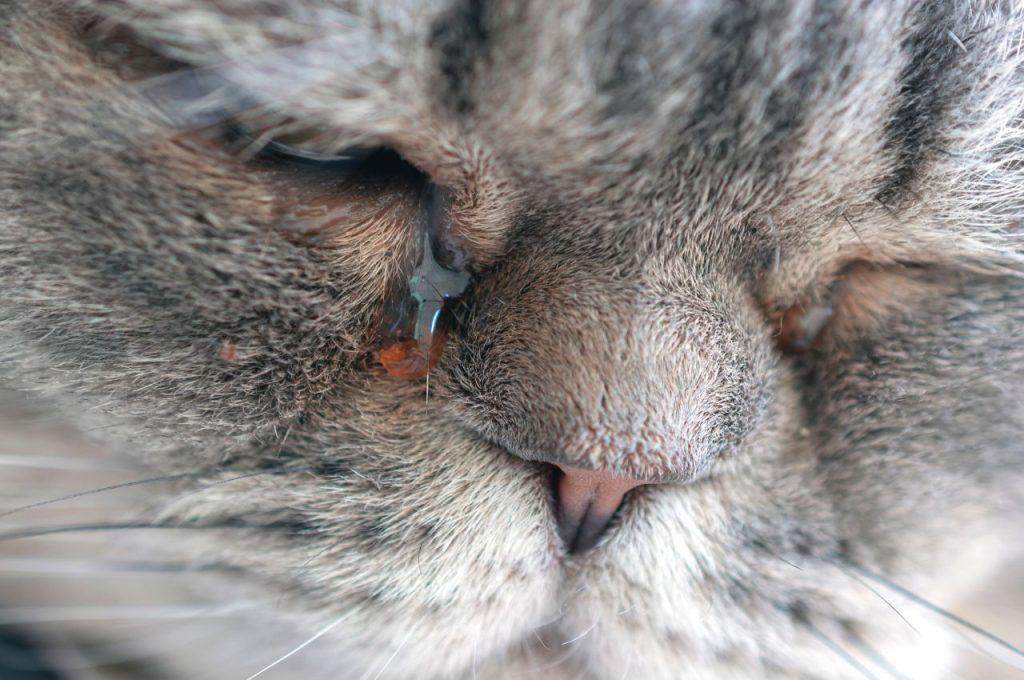We delve into the symptoms of cat allergies that specifically affect the eyes. Cat allergies can cause a range of eye-related issues, including redness, itching, watering, swelling, burning sensations, and sensitivity to light. We explore each of these symptoms in detail, providing insights into how they manifest and the potential impact on individuals with cat allergies.
By understanding the signs of cat allergy symptoms in the eyes, readers can better recognize and address allergic reactions, leading to improved management and relief.
If you suspect that you or someone in your household is allergic to cats, it’s essential to recognize the symptoms affecting the eyes.
Understanding Cat Allergy Symptoms
Cat allergies affect a significant number of individuals worldwide, making it crucial to understand the symptoms. Allergy symptoms can manifest in various ways, with the eyes being particularly susceptible. In this article, we will delve into the causes of cat allergies, as well as explore the common symptoms associated with these reactions. Whether you are a cat owner or someone who simply spends time in the vicinity of cats, knowing the signs of cat allergies can help you better navigate these situations.

What Causes Cat Allergies?
Understanding the underlying causes of cat allergies can shed light on why individuals may experience allergic reactions when exposed to cats. Contrary to popular belief, it is not the cat’s hair that triggers allergies, but rather a protein found in their saliva, urine, and dander. This protein, called Fel d 1, is a common allergen that can cause a range of symptoms in susceptible individuals.
When cats groom themselves, they transfer the Fel d 1 protein onto their fur. As a result, when the cat sheds or the fur gets airborne, it can come into contact with human skin and eyes, triggering an allergic response. It’s important to note that certain breeds, such as Siberian or Balinese cats, produce less of this allergen and may be more suitable for individuals with allergies.
Common Cat Allergy Symptoms
Cat allergies can affect different individuals in various ways, but there are several common symptoms to watch out for. These symptoms can range from mild to severe and can occur immediately or several hours after exposure to cats. Here are some of the most prevalent cat allergy symptoms:
| Allergy Symptoms | Description |
| Sneezing | Repeated, uncontrollable sneezing fits are often accompanied by nasal congestion. |
| Runny or stuffy nose | Excessive nasal discharge, often accompanied by difficulty in breathing. |
| Watery, itchy eyes | Redness, itching, and excessive tearing of the eyes due to exposure to cat allergens. |
| Wheezing or coughing | Respiratory symptoms, such as wheezing or coughing, may occur in severe cases. |
| Rashes or hives | Itchy, red patches or raised bumps on the skin as a result of an allergic reaction. |
| Difficulty in breathing | In severe cases, cat allergies can cause shortness of breath or difficulty in breathing. |
It is important to note that these symptoms may vary in intensity and duration depending on each individual’s immune response and sensitivity to cat allergens. While these symptoms are often associated with cat allergies, a proper medical diagnosis is necessary to confirm the cause. If you experience any of these symptoms, it is advisable to consult with a healthcare professional for an accurate assessment and personalized guidance.
Recognizing Allergic Reactions in the Eyes
Allergic reactions in the eyes are a common manifestation of cat allergies. For those who are sensitive to cat dander, being around cats can lead to a range of uncomfortable symptoms. Recognizing these allergic reactions in the eyes is crucial to provide appropriate care and relief. In this article, we will explore the various symptoms to look out for when dealing with cat allergies, specifically focusing on redness and irritation, watery and itchy eyes, swelling and puffiness, and blurry vision.
Redness and Irritation
One of the most noticeable cat allergy symptoms in the eyes is redness and irritation. When exposed to cat allergens, such as dander or saliva, the body releases histamines that cause blood vessels in the eyes to expand. This leads to a distinct red appearance and a feeling of irritation or discomfort. Redness in the eyes may also be accompanied by itchiness, making it difficult to resist the urge to rub or scratch the affected area.
Watery and Itchy Eyes
Watery and itchy eyes are another common sign of an allergic reaction to cats. When cat allergens come into contact with the eyes, the body’s immune system responds by producing excess tears in an attempt to flush out the irritants. This can result in a constantly watery or teary-eyed appearance. In addition, the presence of allergens can trigger an itching sensation, causing the individual to rub or scratch the eyes even more.
Swelling and Puffiness
Swelling and puffiness around the eyes are potential allergic reactions that may occur when exposed to cat allergens. These symptoms are often caused by the body’s immune response, which causes an increase in fluid retention in the surrounding tissues. As a result, the area around the eyes can become swollen and puffy, creating a tired appearance. In some cases, the swelling may even extend to the eyelids, making it difficult to fully open or close the eyes.
Blurry Vision
Blurry vision is a less common but still significant symptom of cat allergies affecting the eyes. When the eyes are exposed to cat allergens, they may become inflamed or irritated, leading to a temporary distortion of vision. This can manifest as a general blurriness or difficulty focusing on objects. If you experience blurry vision along with other cat allergy symptoms, it is important to seek medical attention to determine the best course of treatment.

To effectively manage cat allergies, it is crucial to recognize the allergic reactions that can occur in the eyes. Symptoms such as redness and irritation, watery and itchy eyes, swelling and puffiness, and blurry vision can all indicate an allergic response to cat allergens. By identifying these symptoms early, individuals can take appropriate steps to alleviate discomfort and seek professional medical advice if necessary.
Managing and Treating Cat Allergy Symptoms
Manage and treat cat allergy symptoms with effective remedies for eyes. Alleviate redness, itching, and irritation by following these practical and natural solutions.
Managing and treating cat allergy symptoms is essential for any individual who suffers from allergies but still wants to keep cats as pets. While it may not be possible to eliminate all cat allergens from your environment, there are steps you can take to minimize exposure and alleviate symptoms. In this section, we will explore different methods to manage and treat cat allergy symptoms.
Minimizing Exposure to Cats
When it comes to managing cat allergy symptoms, minimizing exposure to cats is a crucial step. While it may be difficult to avoid contact with your furry feline friend entirely, there are several measures you can take to reduce allergens in your home:
- Designate specific areas of your home as cat-free zones, such as bedrooms or living rooms.
- Regularly clean your home, paying extra attention to areas where allergens tend to accumulate, such as carpets, upholstery, and curtains. Consider using a vacuum cleaner with a HEPA filter.
- Wash your hands thoroughly after touching or playing with your cat.
- Invest in a high-quality air purifier to help remove airborne allergens.
- Consider using allergen-resistant bedding and pillow covers to create a more allergy-friendly sleeping environment.
- Encourage your cat to spend more time outdoors or in a separate area of your home.
Using Over-the-counter Medications
If minimizing exposure alone isn’t enough to alleviate your cat allergy symptoms, over-the-counter medications can offer relief. Here are some options to consider:
- Antihistamines: These medications work by blocking the effects of histamines, the chemicals responsible for allergy symptoms such as itching, sneezing, and watery eyes. Common over-the-counter antihistamines include cetirizine, loratadine, and fexofenadine.
- Nasal sprays: Over-the-counter nasal sprays containing corticosteroids can help reduce nasal congestion and inflammation caused by cat allergies.
- Eye drops: If your cat allergy symptoms primarily affect your eyes, over-the-counter antihistamine eye drops can provide temporary relief from itching and redness.
Seeking Medical Advice and Allergy Testing
If your cat’s allergy symptoms persist or are bad despite taking the side steps and using over-the-counter medications, it’s advisable to seek medical advice. A healthcare professional can evaluate your symptoms and recommend suitable treatment options. Additionally, they may suggest allergy testing to identify the specific allergens triggering your symptoms. Allergy testing can help determine whether your allergy is specifically to cats or if other allergens are also involved.
Allergy Shots and Immunotherapy
In some cases, allergy shots, also known as immunotherapy, may be recommended for individuals with severe cat allergies. This treatment involves regular injections of small amounts of allergen extracts over some time. The goal is to gradually desensitize your immune system to cat allergens, reducing the severity of your allergic reactions. Allergy shots can be highly effective in lessening cat allergy symptoms and improving the overall quality of life for cat lovers. In conclusion, managing and treating cat allergy symptoms involves a combination of measures, including minimizing exposure to cats, using over-the-counter medications, seeking medical advice and allergy testing, and considering allergy shots as a long-term solution. By taking these steps, individuals can enjoy the companionship of their furry friends without the constant discomfort of cat allergies.

Conclusion
Cat allergies can significantly affect the eyes, causing symptoms such as redness, itching, watering, swelling, burning sensation, and sensitivity to light. These symptoms can range from mild to severe and can significantly affect your quality of life.
It is important to be aware of these symptoms and take the necessary steps to manage them, such as minimizing exposure to cats and consulting a healthcare professional for proper diagnosis and treatment.
